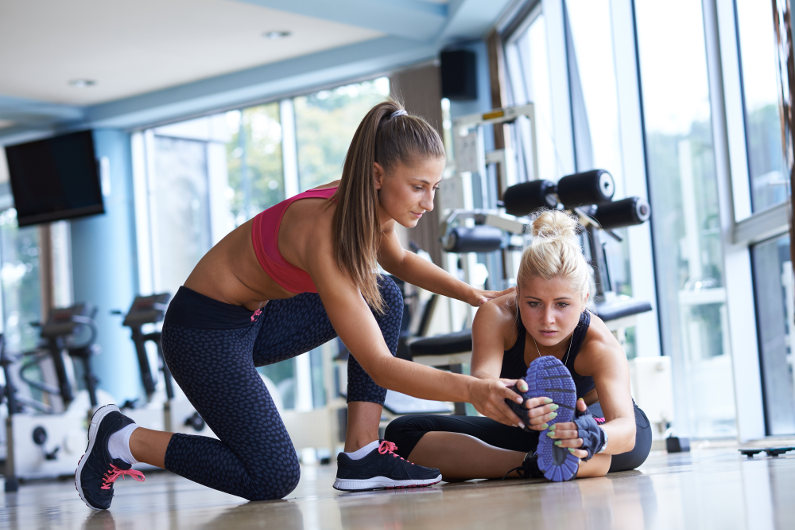Clients who regular visit a gym or leisure centre are probably expected to sweat a bit, whether it’s through an intense sport activity or even a trip to the sauna. Whatever it is, gyms and leisure centres have to obtain a well-maintained air conditioning unit to keep clients from overheating and comfortable during a rigorous exercise regime in order to improve their performance.

For the gyms, what temperature should be maintained? What are the legislations in place to keep clients’ workouts at the optimal temperature? With air conditioning provider Daikin, we investigate these matters and look into the risks of poor temperature control can pose on gym-goers.
Duties and responsibilities
Unfortunately, there are actually no regulations regarding specific temperatures within a gym or leisure centre according to Health and Safety Executive. But normal health and safety legislation covers the vast majority of other safety requirements at the gym. In terms of temperature, although there are no fixed regulations specifically for gyms and leisure centres, we can use minimum workplace temperature requirements as an estimate of what constitutes a comfortable temperature during activity.
The Approved Code of Practice has stated that 16°C is the base level for a comfortable temperature within the workplace. Work requiring “rigorous physical effort” is placed a little lower, at 13°C. Again, this isn’t a legal requirement, but it gives an idea of what an optimum temperature is for comfortably engaging in physical activity.
Sport England had produced a handy guide for exercise spaces and fitness centres, detailing the ideal temperature for clients.
- Fitness Gym – 16°C to 18°C (60°F to 64°F) in the summer, with “comfort cooling” as needed.
- Studios – 18°C (64°F), with a slight summer rise acceptable.
For high temperatures at the gym
If the temperatures within the gym become too hot, then those working out would gain a torturous experience. Plus, it’s a risky activity; dehydration and heat stroke are notable risks of working out in an overheated gym. But even just sweating too much can be a problem. We Be Fit notes that while over-sweating can cause gym-goers to notice an extra pound of weight loss at the end of their workout, the weight lost is fluids from sweating and will be negated with a drink. The article suggests that working out in an overheated gym for a long period can result in a 50% less effective workout! All that sweating for nothing.
For low temperatures at the gym
If the temperatures are cold within a gym, it can just be as difficult to work out overheating environment. My Inner Go looked at the pros and cons of working out in a cold environment and found that chilly temperatures brought with it a higher risk of injury. This is because muscles tend to seize up in the cold (which is why warming up before physical activity is so important). The website offered a great analogy for cold muscles: consider them like Play-Doh! When Play-Doh gets cold, it goes stiff and doesn’t stretch, it just snaps. But warm Play-Doh is stretchy and flexible.
Keeping gym and leisure centre temperatures regulated
It’s essential for sports centres to consider the different rooms and classes around the facility when regulating the temperature. Investing in an efficient, responsive air conditioning system will help regulate a comfortable temperature within the building, with units in Daikin’s air conditioning range offering low energy consumption models to fit your carbon emission targets.
Successful workouts heavily depend on comfortable temperatures. Keeping a good temperature through a facility will ensure customers stay happy and are more likely to keep coming back. If the gym starts to get a reputation for being freezing cold or too stuffy, gym goers will quickly turn to other establishments.
Sources:
https://www.livestrong.com/article/532219-how-to-drop-your-core-temperature/
https://www.myinnergo.co.uk/blogs/news/17054672-how-does-temperature-affect-training
http://www.webefit.com/articles_400-499/article_406_GymTemp.html
https://www.sportengland.org/media/4203/fitness-and-exercise-spaces.pdf
http://www.hse.gov.uk/temperature/law.htm
http://www.hse.gov.uk/pubns/books/l24.htm




